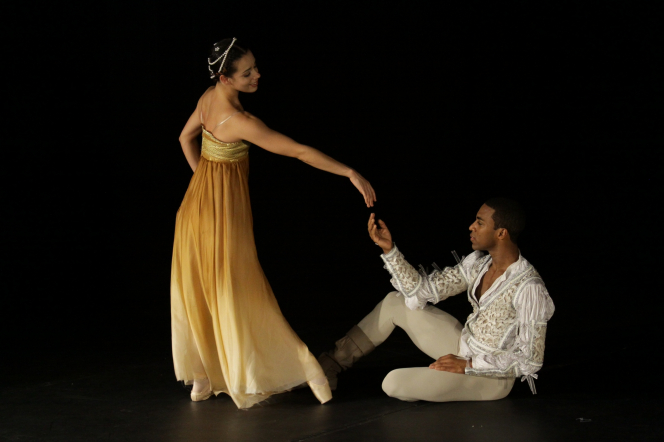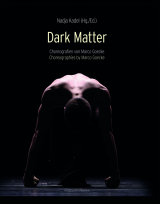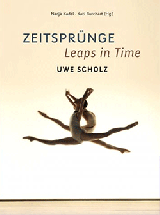"Romeo und Juliet" by Giovanni Di Palma
Giovanni Di Palma dedicated his first rehearsals to the core of the drama, the great love – or balcony – pas de deux. Aline Campos Ferro Rocha is his Juliet, Nielson Souza his Romeo, two young dancers who make us believe straight away that they have fallen head over heels in love. They convince with their naturalness in Di Palma's fluent choreography."It was important for me to become directly emotionally involved in this drama", says Di Palma of his first evening-length production. Up until a few years ago he was himself a dancer on the stage, and he was only eighteen when he performed in John Cranko's influential version of "Romeo and Juliet".
Photo: Silvia Machado; Dance: Aline Campos Ferra Rocha and Nielson Souza
Like Cranko, he, too, bases his choreography on the music of Sergei Prokofiev, but he shortens it significantly. What Prokofiev structured as a ballet in three acts, twelve scenes with prologue and epilogue, Di Palma has condensed into a ballet in two acts and ten scenes. Prokofiev composed his music in 1938 and revised it for a new performance in Leningradin 1940. The powerful neo-classical work assigns musical leitmotifs to the main characters. This is also why the events are conveyed so smoothly: the music accommodates the strong, gesturalquality of Shakespeare's text; the fighting between the enemy clans of Capulet and Montague is conveyed even without wordy explanations of standpoints.
Di Palma creates for his new interpretation the atmosphere of an historic Italian town at the hot height of summer, a tense mood in which feelings can easily be agitated. The scenery and costume by Jérome Kaplan are, like the dancing, kept consciously classical. “For me, it was not about creating a revolutionary version of the story”, explains the choreographer. “I was particularly interested in the motives that induce the characters to carry out their actions.”
It is this genuinely dramatic approach that brings his version, on the one hand, closer to Shakespeare's tragedy than many other “Romeo and Juliet” ballets. Italy, where Dante had already mentioned the two enemy lineages of “Cappelletti” and “Montecchi” in his “Divine Comedy”, was also the country in which a choreographer first brought the work to the dance stage: in 1785 EusebioLuzzi wrote a five-act ballet about Romeo and Juliet in Venice. Since then, choreographers have again and again tackled the material, including BronislavaNijinska and George Balanchine, TatjanaGsovsky, Leonid Lavrovsky, Frederick Ashton, John Cranko, Rudolf Nureyev and Kenneth MacMillan.
On the other hand, Di Palma reduces the main characters invented by Shakespeare to what is most essential. The aspect of power is represented by only two characters: Juliet's mother, Lady Capulet, stands for political power, Friar Laurence for spiritual power. Political power threatens physical violence, represented here by Lady Capulet's nephew, Tybalt, who gets hold of a weapon right at the beginning in a rain of swords. The representative of spiritual power, Laurence, is a key figure because his actions have both a moral and a political motive: he marries Romeo and Juliet because in so doing he wishes to end the conflict between the families. He is not concerned with doing two lovers a favour. Romeo's behaviour would by no means justify this anyway, for at the beginning of the play he was in love with a different woman (Rosalind), and Laurence therefore considers him to be fickle. Through this marriage the friar would like to create the conditions for peace and thereby for the possibility of politics.
Laurence's motivation and the unpredictable failure of his plan are demonstrated explicitly in Di Palma's choreography. We see how the messenger, who was supposed to inform Romeo that Juliet's death was faked, is intercepted almost by chance. This shows why the friar's calculation does not come off, for Romeo and Juliet die.However, it is precisely through the couple's love sacrifice at the end that the possibility of reconciliation between the enemy parties is created.
Di Palma's choreography also accommodates Shakespeare's drama because its theme is the eternal conflict between the individual and the society s/he lives in. It is precisely this that makes “Romeo and Juliet” specifically suited to ballet, for in hardly any other material does the interplay between solo parts and corps mesh so powerfully with the antagonism between individual and society that is staged by the story. Dance conveys this tension physically. It does not need language.
Nadja Kadel
(11.11.2013)







 Künstlermanagement Berlin
Künstlermanagement Berlin
 Künstlermanagement Berlin
Künstlermanagement Berlin